
kublerrosschangecurve Totem Consulting
Elisabeth Kubler-Ross wrote "On Death and Dying" in 1969, inspired by her work with people who were terminally ill. The 7-step Kuber-Ross Change Model, or Change Curve, has its roots in what became known as 'the 5 stages of grief', or 'the 5 stages of death', or 'the 5 stages of loss', or simply 'the 5 stages':
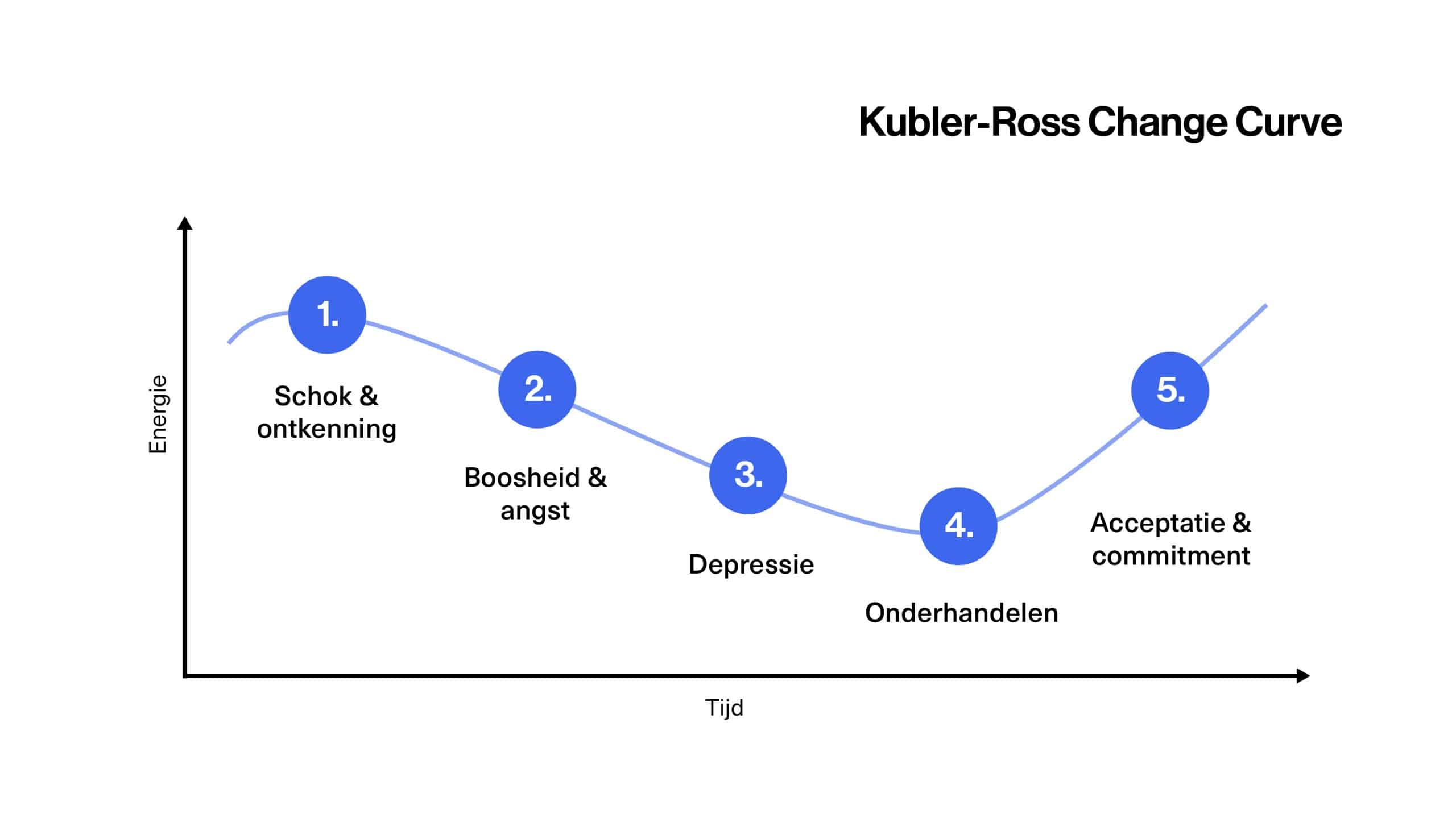
KublerRoss Change Curve leren begrijpen
Kübler-Ross' Five Stage Change Curve Model is a popular method of understanding the process of change and how people respond to it. The model was developed by Swiss-American psychiatrist Elisabeth Kübler-Ross, who first presented her ideas during a conference in 1969 after working with terminally ill patients for many years.
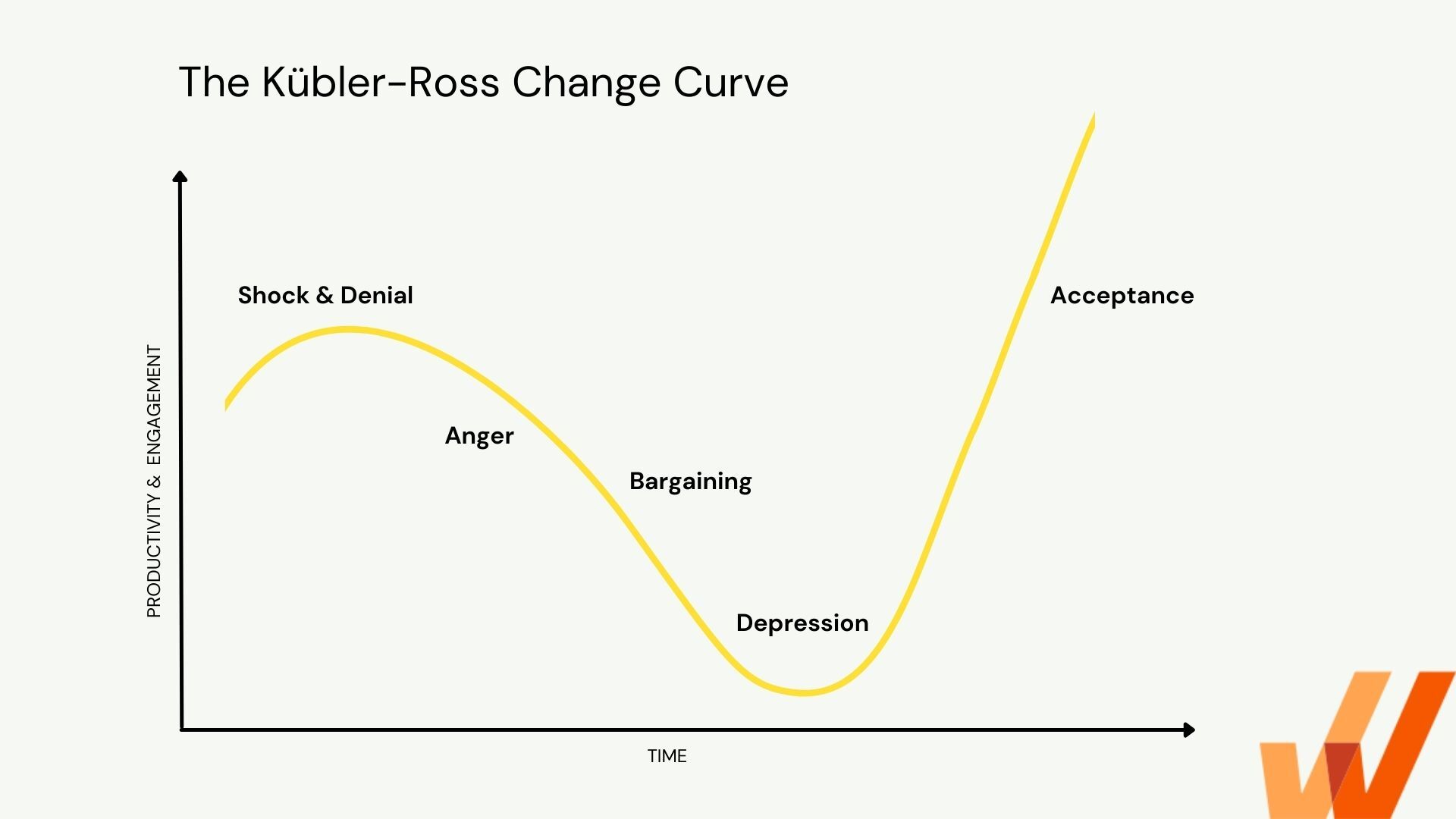
The Kübler Ross Change Curve in the Workplace (2024) Whatfix
The change curve is based on a model of the five stages of grief -denial, anger, bargaining, depression and acceptance-originally described by Elisabeth Kübler-Ross in her 1969 book On Death and Dying. Since then, the stages have been utilized and adapted into the Kübler-Ross change curve, which individuals and organizations alike use to.

KublerRoss Change Curve, adapted from Optima Training (UK) Limited. Download Scientific Diagram
It's often attributed to psychiatrist Elisabeth Kubler-Ross, resulting from her work on personal transition in grief and bereavement. Note 2: Here we're describing major change, which may be genuinely traumatic for the people undergoing it. If change is less intense, adjust the approach appropriately.

Kubler Ross Change Curve Images and Photos finder
When Swiss psychiatrist Elisabeth Kübler-Ross moved to the US in 1958 she was shocked by the way the hospitals she worked in dealt with dying patients. "Everything was huge and very.
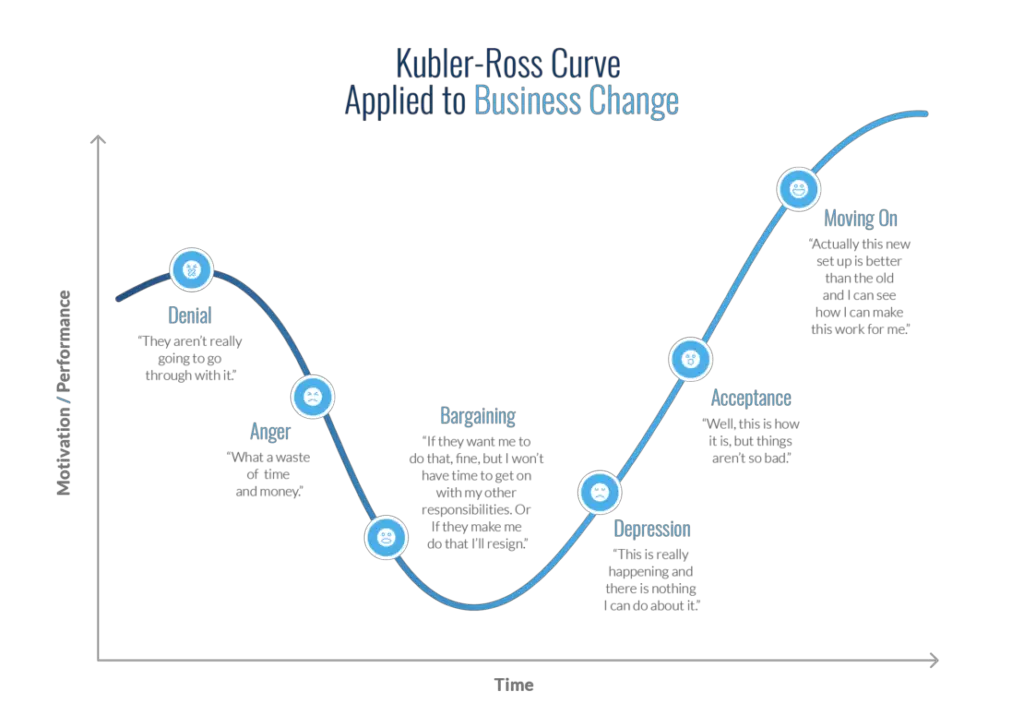
Elisabeth Kubler Ross Change Curve Kubler Rose Stages Of Grief 2023
In 1969, Elisabeth Kübler-Ross described five common stages of grief, popularly referred to as DABDA. They include: Denial Anger Bargaining Depression Acceptance A Swiss psychiatrist, Kübler-Ross first introduced her five stage grief model in her book On Death and Dying.

Kubler Ross Change Curve Model applied to Smart Workplace... Download Scientific Diagram
The Kübler-Ross Change Curve is derived from her 1969 book On Death and Dying, and details the different emotional stages an individual goes through when they are confronted with dramatic change, such as being made redundant or being asked to take on a different role at work as part of a restructure. The curve outlines seven stages in the.
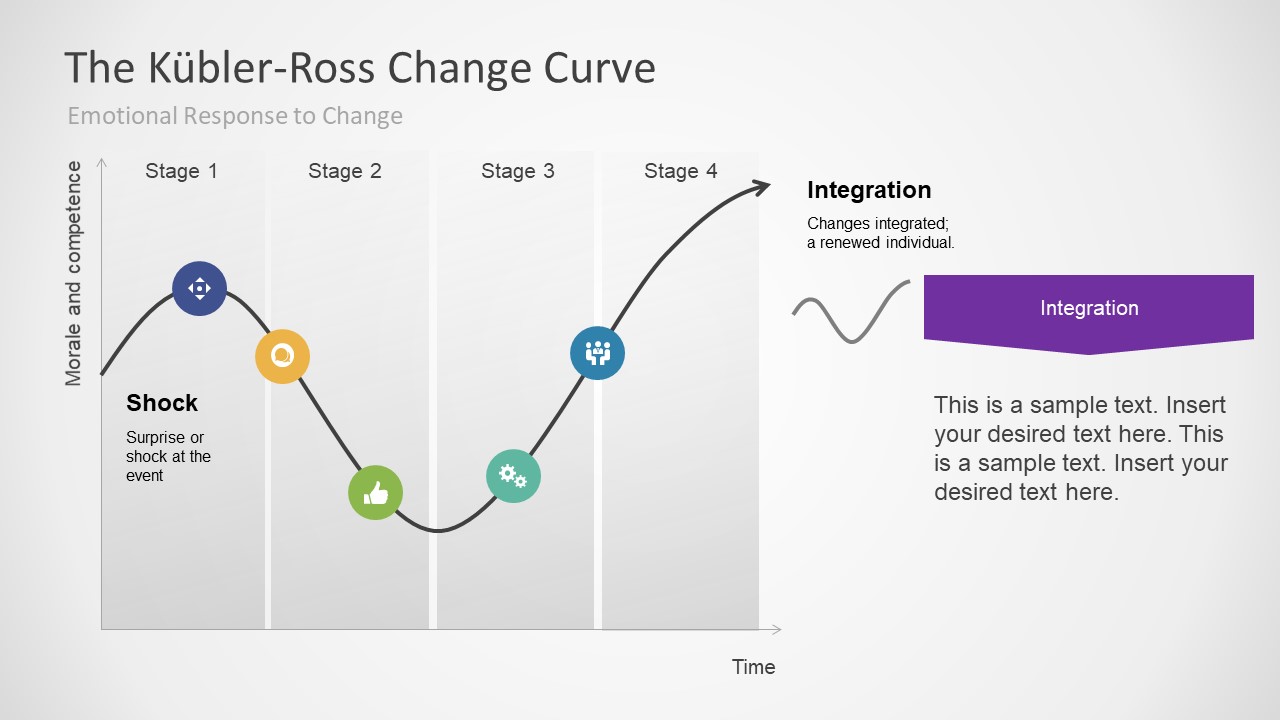
Kubler Ross Change Curve for PowerPoint
The Kubler-Ross Change Curve can be effectively used by business leaders across the world to help their workforce adapt to change and move towards success. In this article, we explore 1) what is Kubler-Ross Model, 2) the applications of the Kubler-Ross Change Curve, and 3) variations of change curve concepts. WHAT IS KUBLER-ROSS MODEL?
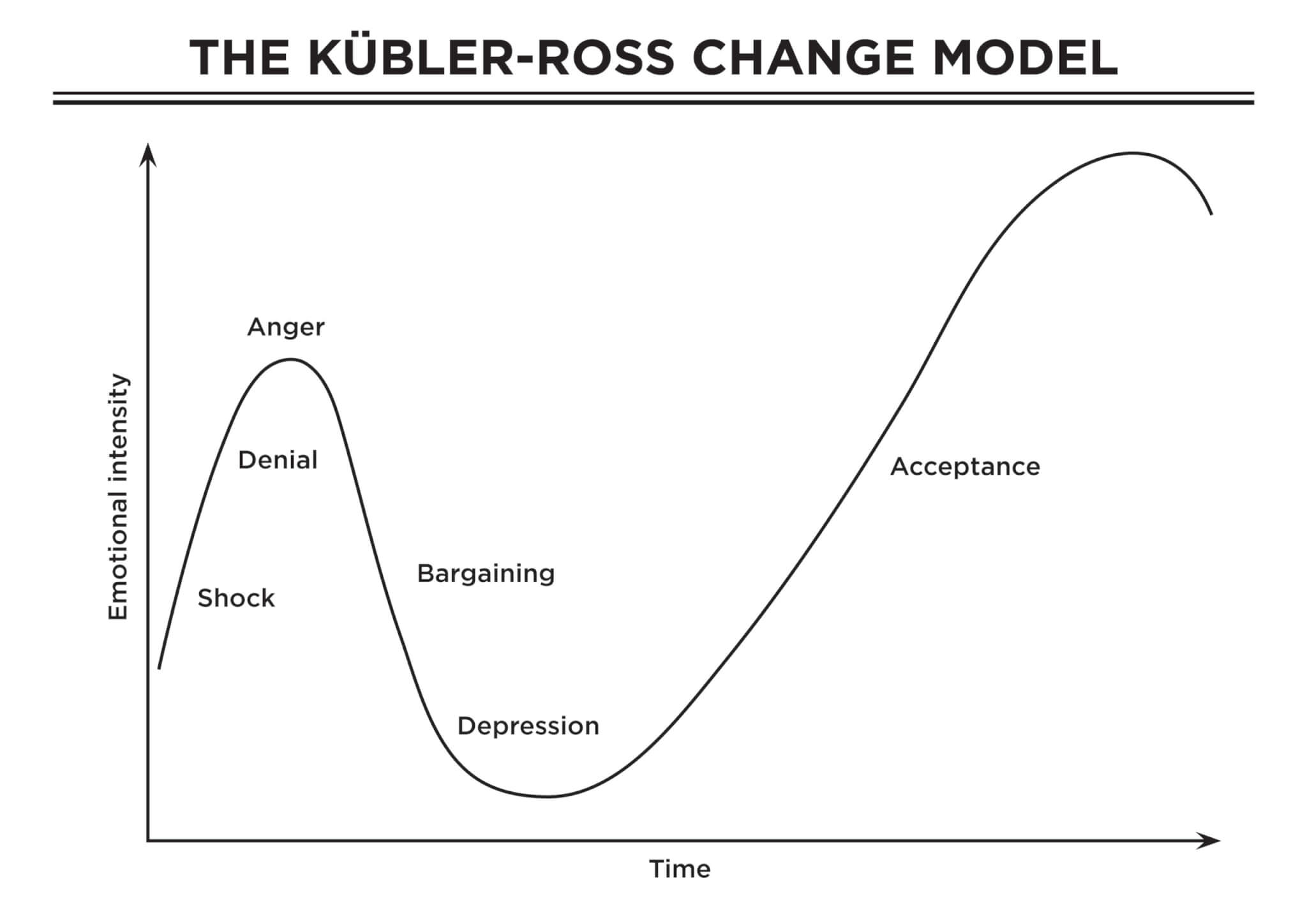
The KüblerRoss Change Cycle Lisa Stone Careers & Coaching
What is change management? The triggers and types of change Models for change There have been many models developed to support the management of change, which include identifying the change required, designing and then implementing the change programme.
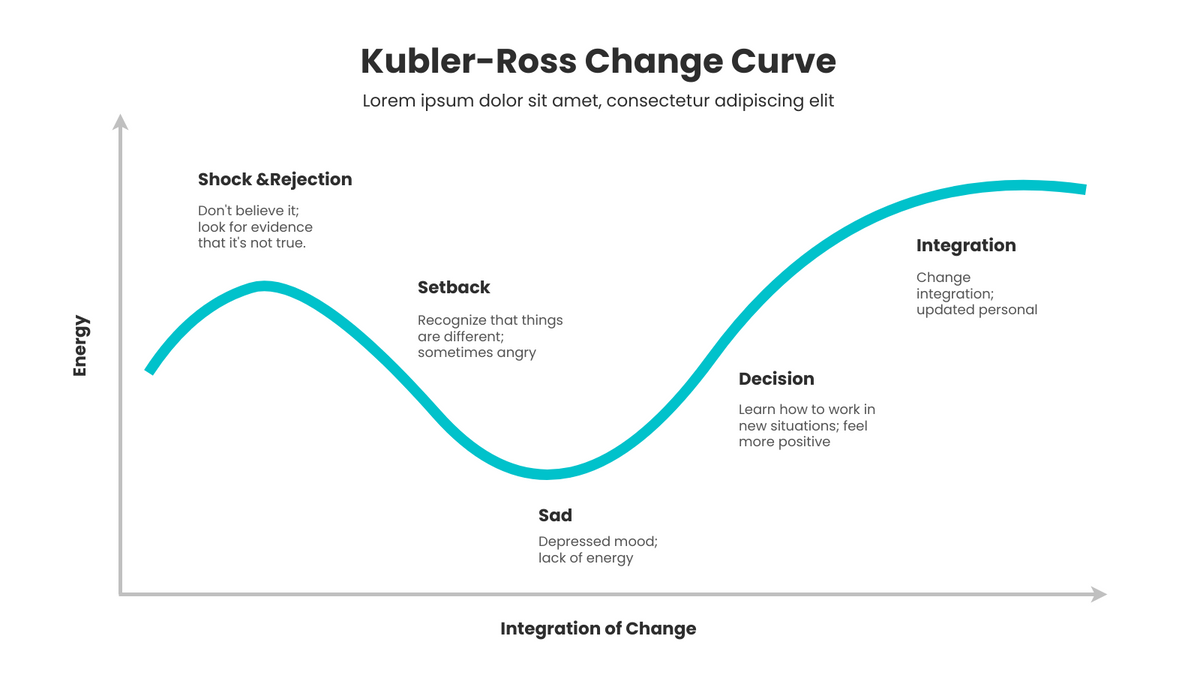
Stages Of KublerRoss Change Curve KublerRoss Change Curve Template
The Kubler-Ross Change Curve model has been accepted worldwide to explain the change process. As the basic human emotions experienced during personal loss, change, death, or a dramatic experience remain the same, this model can be applied effectively in such situations. Kübler-Ross Change Curve®
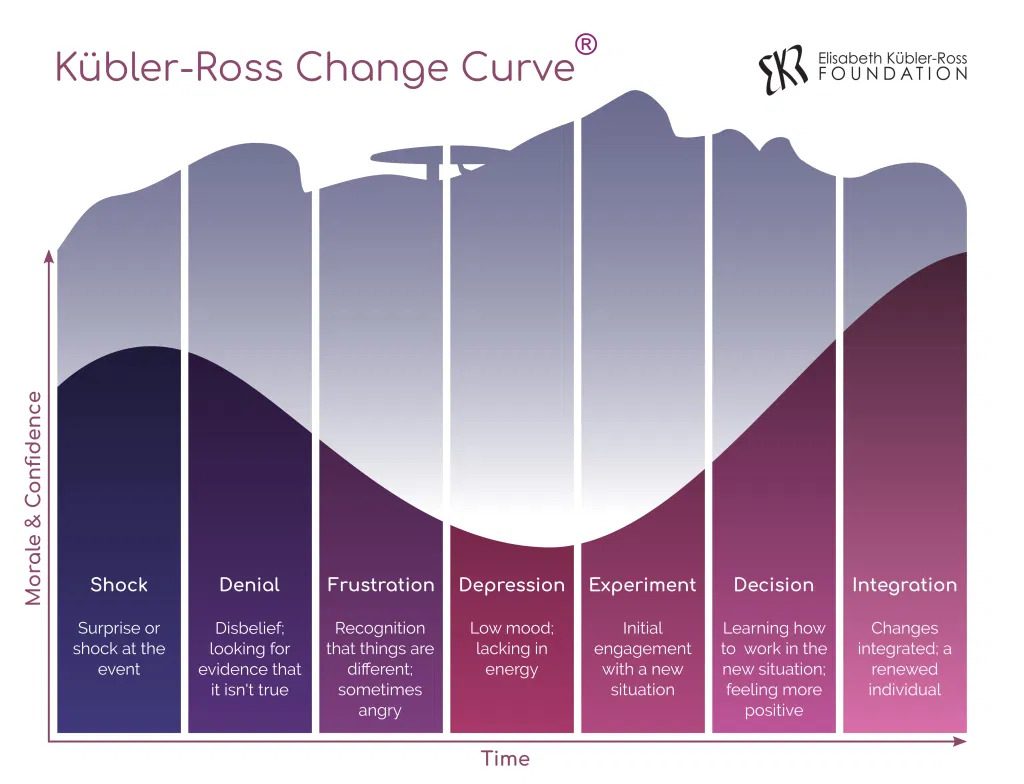
Mourning And The Five Stages of Grief
Kübler-Ross originally developed stages to describe the process patients with terminal illness go through as they come to terms with their own deaths; it was later applied to grieving friends and family as well, who seemed to undergo a similar process. [10] The stages, popularly known by the acronym DABDA, include: [11]
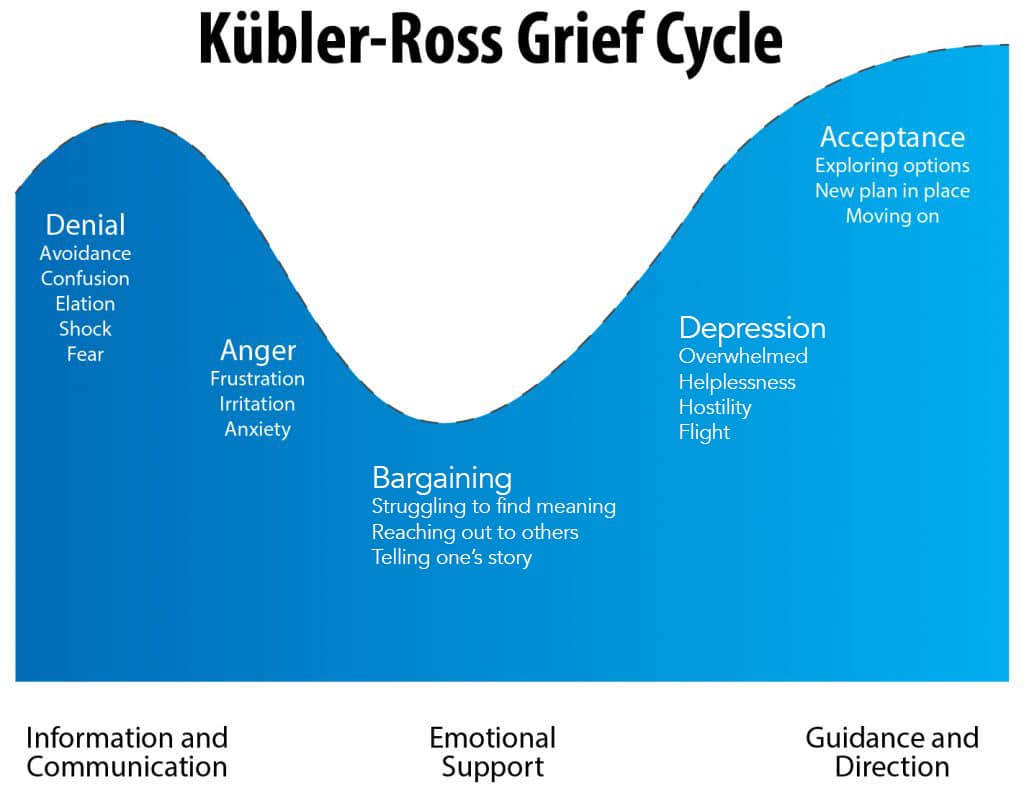
Models KüblerRoss Change Curve Sergio Caredda
The Change Curve is based on a model originally developed in the 1960s by Elisabeth Kubler-Ross to explain the grieving process. Since then it has been widely utilised as a method of helping people understand their reactions to significant change or upheaval.

Understanding the KüblerRoss Change Curve in relation to business and Covid19 CMG Change
What Is the Change Curve? The Change Curve, or Kübler Ross' Change Curve Model, was created by the Swiss-American psychiatrist Elisabeth Kübler-Ross in 1969. It depicts 5-stages of grief denial, anger, bargaining, depression, and acceptance.

Crocus Coaching and Development » TheChangeCurve[1]
Kubler-Ross proposes that a terminally ill patient goes through five stages of grief after learning of his or her condition. She further proposed that this model could be applied to any dramatic life change situation. The first five stages of shock & denial, anger, bargaining, depression and acceptance - have been adjusted over the years. There are many versions of the curve that exist. Most.

kublerross_change_curve2 Differently Wired
A response by human to such situations is explained by a Swiss psychiatric Elisabeth Kubler Ross who developed a model which is also widely known Kubler-Ross Change Curve or 5 Stages of Grief and Loss.
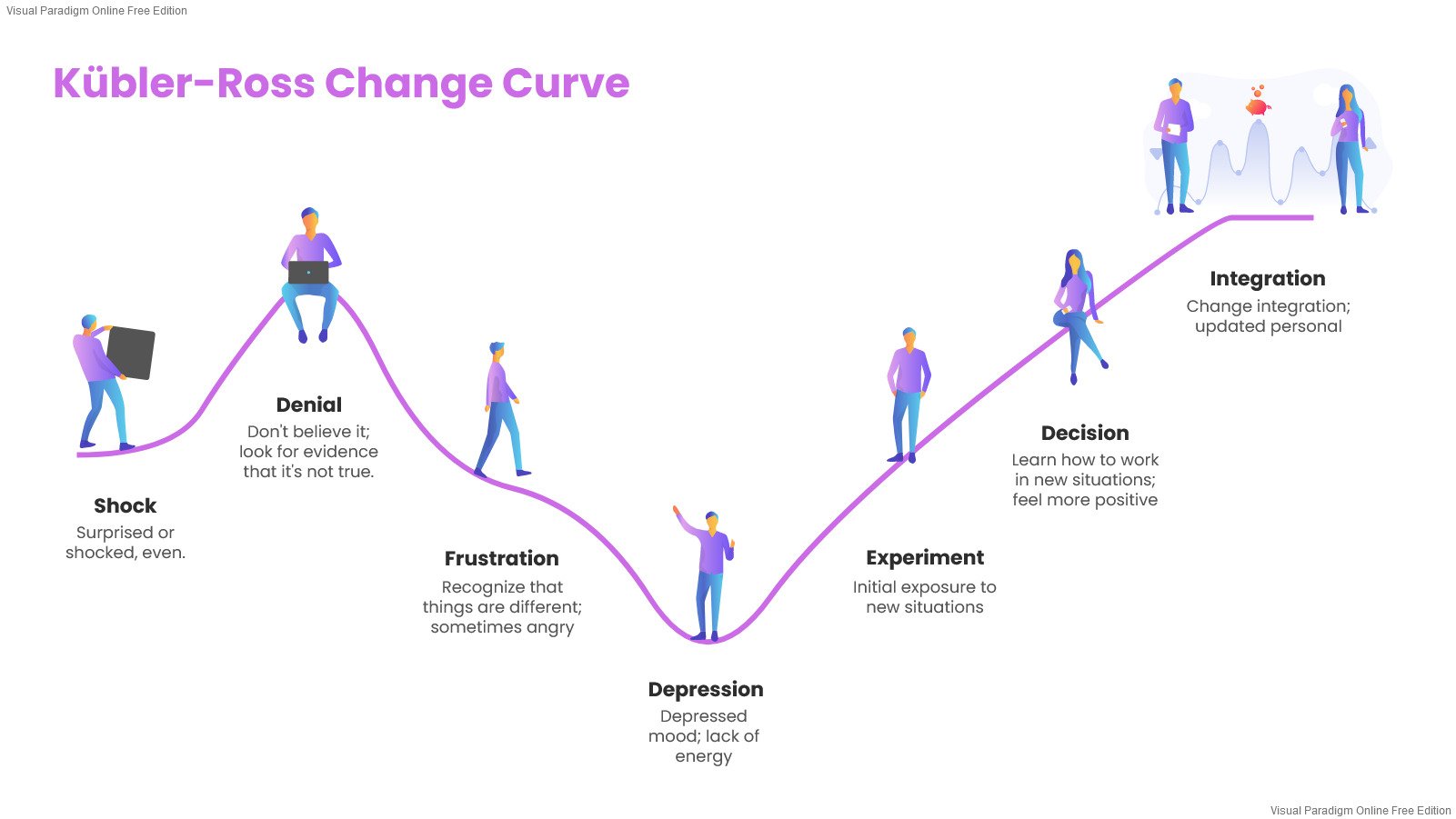.jpg)
The KüblerRoss Change Curve — The Stress Less Company
When Swiss psychiatrist Elisabeth Kübler-Ross moved to the US in 1958 she was shocked by the way the hospitals she worked in dealt with dying patients. "Everything was huge and very.